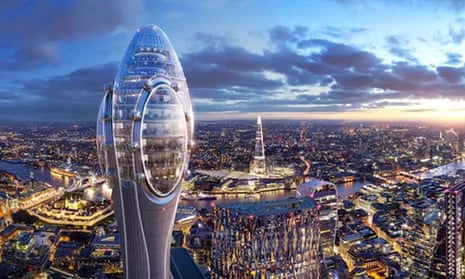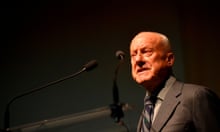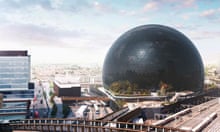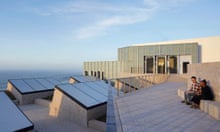Plans to build a 300-metre (1,000ft) skyscraper dubbed “the Tulip” in the City of London near the Thames have been thrown out by the capital’s mayor, Sadiq Khan.
The building, designed by Norman Foster’s architectural practice, would have been the second tallest in western Europe, but its design was deemed not to be good enough for such a prime location.
The project’s backers had said it would attract 1.2 million visitors a year but its detractors worried it would damage some of London’s most recognisable historical views.
The scheme had initially received the go-ahead but Khan dashed the hopes of its designers, Foster + Partners, on Monday. “The mayor has a number of serious concerns with this application and having studied it in detail has refused permission for a scheme that he believes would result in very limited public benefit,” Khan’s spokesman said.
“In particular, he believes that the design is of insufficient quality for such a prominent location, and that the tower would result in harm to London’s skyline and impact views of the nearby Tower of London world heritage site. The proposals would also result in an unwelcoming, poorly designed public space at street level.”
The chief executive of Historic England, Duncan Wilson, had expressed similar concerns when the City of London Corporation (CoLC) approved the plans in April.
“This building, a lift shaft with a bulge on top, would damage the very thing its developers claim they will deliver – tourism and views of London’s extraordinary heritage,” Wilson said.
“The setting of the Tower of London, a symbol of the city not just to millions of Londoners but to the whole world and one of our most visited places, will be harmed. It has already been damaged by the Walkie Talkie and it would be a great shame if that mistake was repeated.”
But the CoLC described it as a “truly unique visitor attraction” that would help the City, which is relatively quiet on weekends, attract more visitors.










